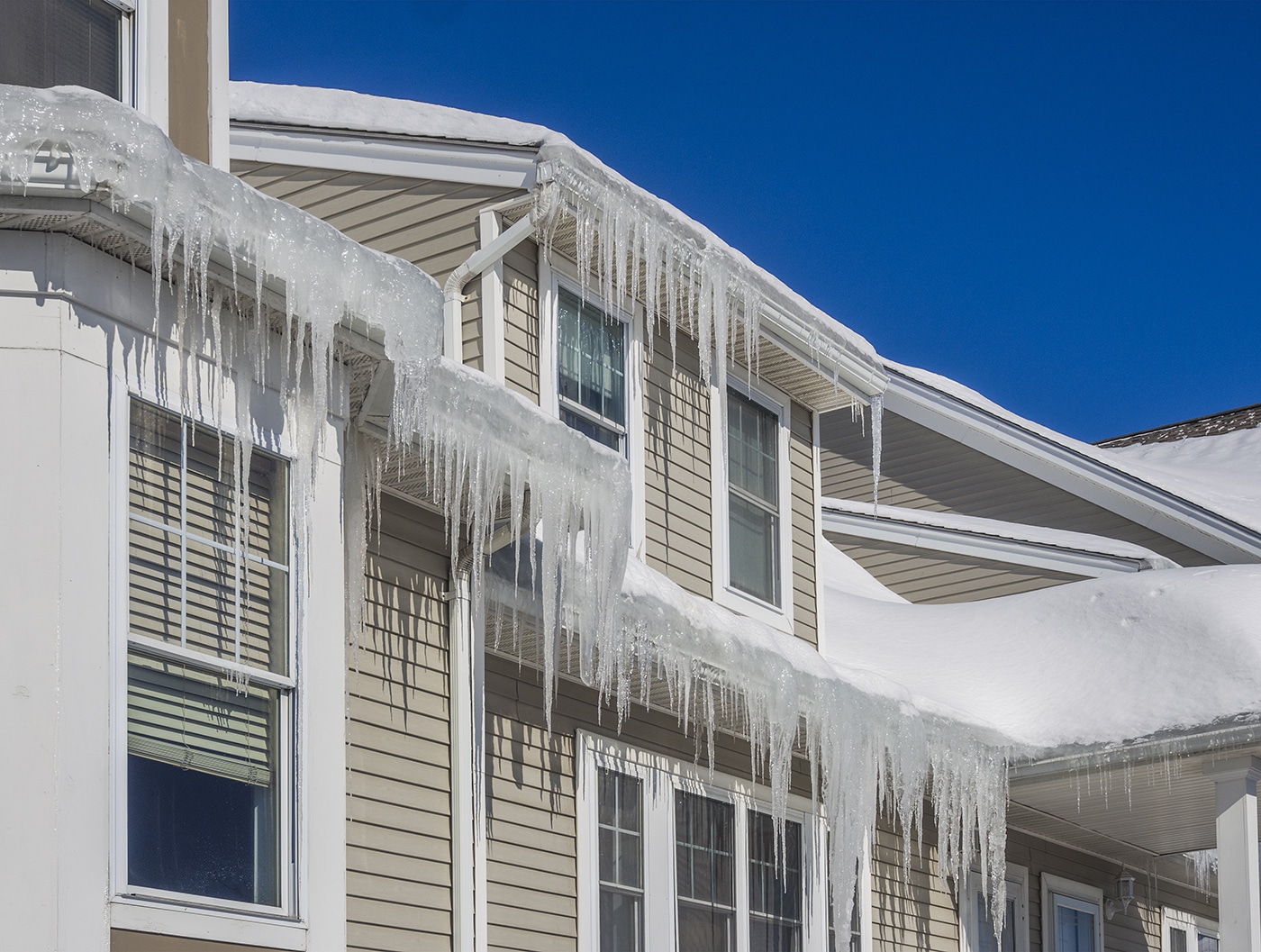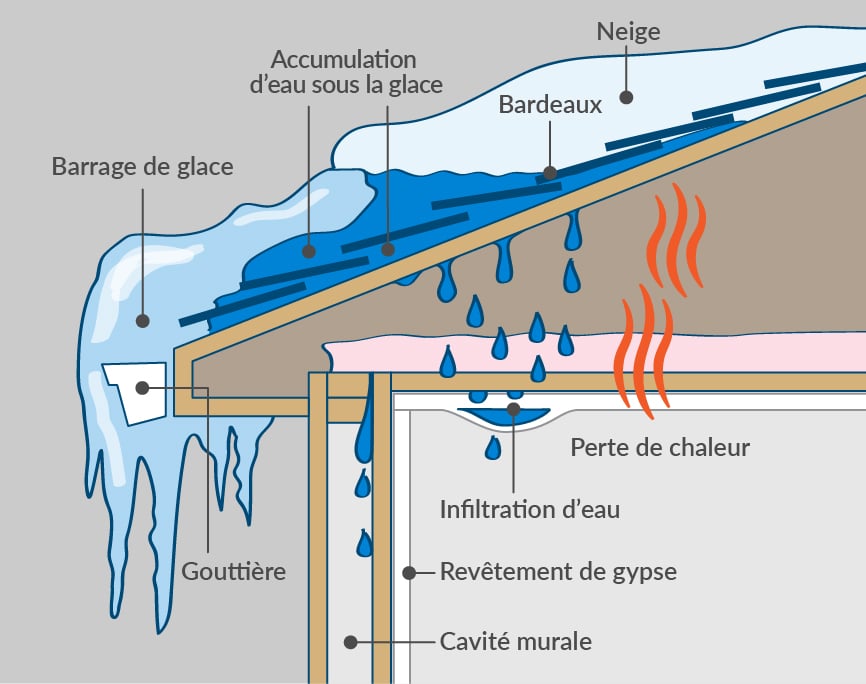Preventing ice build-up on your roof: Understanding the role of your Attic

In the winter, many homes can experience a common problem: ice build-up on a roof. This ice build-up can cause damage to roofs, gutters, and even foundations. It’s rarely the roof itself that’s at fault, but rather what’s right underneath: your attic. In this article, we’ll look at the causes of ice barriers on roofs and possible solutions to stop them.
Several factors can contribute to the formation of ice dams on roofs. Here are the most common:
1. Temperatures below freezing point
When temperatures drop below freezing, water running off roofs can solidify, creating a layer of ice. Roofs that are exposed to prevailing winds can be particularly affected because the cold air circulates faster and cools the roof surface more quickly.
Solution:
It is possible to use de-icing solutions, such as de-icing products or heating wires, to prevent ice barriers from forming on your roof and in your gutters. However, it is important to note that some de-icing products can damage the shingles on your roof, so it is important to use them with care and follow the manufacturer’s instructions. NEVER use salt. It is also important to note that de-icing products can have a negative environmental impact if used improperly, so it is important to choose environmentally friendly products whenever possible.
2. Inadequate ventilation in the attic
Poor ventilation is another common cause of ice formation on roofs. Improper ventilation prevents fresh air from circulating through the attic and can create warm areas under the roof, melting snow and ice, which then freezes when it reaches the cold edges. Signs of inadequate ventilation can include damage to shingles or tiles, signs of mold and high heating bills.
Solution:
If you suspect poor ventilation, have your roof checked by a professional. They will be able to assess whether your ventilation is adequate and, if necessary, recommend solutions to improve the flow of fresh air into your attic. These solutions may include installing or adding an attic fan.
3. Insufficient insulation in the attic
Insufficient insulation can result in heat loss through the roof, which can cause snow and ice to melt. When this melted water flows to the edge of the roof, it can turn to ice because of the colder temperatures in that area. Insufficient insulation can also create hot spots under the roof, which can lead to uneven snowmelt and ice formation.
Solution:
If you suspect that your roof has insufficient insulation, the first step is to have your roof checked by a professional. If the insulation is indeed inadequate, adding additional insulation with proper air circulation can help prevent ice build-up. A professional can recommend the appropriate type and amount of insulation for your roof.

4. Blocked gutters
Clogged or damaged gutters can prevent water from draining properly, which can lead to ice formation on the roof.
Solution:
Have the damage repaired as soon as possible. Missing or broken shingles should be replaced to prevent water from entering the underlying structure. Clogged or damaged gutters should be cleaned or replaced to allow water to drain properly.
In conclusion
Ice build-up on roofs can cause costly and potentially dangerous damage to your home. Fortunately, there are preventative measures you can take to avoid ice formation on your roof. By keeping your roof clean and well-maintained, ensuring it is properly insulated with adequate ventilation, and removing excess snow, you can help prevent ice from forming on your roof.
If you are concerned about ice formation on your roof, do not hesitate to contact Toitures Abrix. We are roofing professionals with many years of experience in roof repair and new roof installation. We are available to answer your questions and help you prevent ice build-up on your roof.